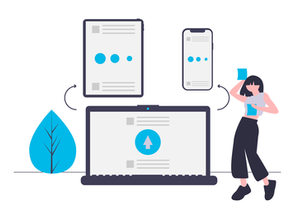How Better Work-Life Integration Can Help Employee Engagement


With increasingly busy work schedules, it can be difficult to make time to run an errand or attend an appointment without compromising your work. Most people struggle to do these things in a typical 9 to 5 workday, thereby creating new sources of stress and frustration and hurting employee engagement at work. With some flexibility, creativity, and planning, it is definitely possible to address personal affairs during the workday without jeopardizing deadlines or work quality. The solution is a culture shift towards a work-life integration solution.
Work-Life Integration is not the same as WorkLfe Balance. The latter separates what is “work” and what is “life” with the goal of maintaining a balance between the two. The UC Berkeley Haas School of Business explains there is a sense of competition or oppositions between these two areas. Depending on your personal needs, you might opt to work longer or use vacation time to manage your professional responsibilities.
The goal of Work-Life Integration, as the name suggests, is an incorporation of the responsibilities of your personal life with the routines of your work life. What this means is being flexible enough to blend the two together so there is no need to sacrifice one or the other. Work-life integration is unique because there is no line separating the two, and no balance to maintain.
Work-Life Integration is a results-oriented approach built around flexible work arrangements that accommodate individual private needs. This approach prevents employee burn-out, alleviates stress, promotes productivity, and moreover, contributes to employee engagement and overall satisfaction. The primary benefit from an integration approach is the ability for employees to continuously focus and plan out personal priorities alongside professional responsibilities. Rather than interrupting their work schedule with competing priorities, employees are free to set up a routine to strategically balance their work and life.
Work-Life Integration can be great for employees as it helps them meet their objectives as well as provide deliverables on a flexible timeline. Organizations must also be able to adopt metrics that apply to results rather than hours . Adopting work-life integration arrangements to a company culture demonstrates a level of trust on the part of the employer that promotes and fosters employee engagement. It also creates increased autonomy and accountability for deliverables on the part of employees.
To start, develop and share a written policy that clearly sets out the goals, expectations, and repercussions for not meeting deliverables. Next, review the policy with all staff to confirm their buy-in and support. Expectations may look different for different employees, for example part-time vs full-time, but they can be customized to suit both individual and company needs.
Integration may be just the initiative and culture shift your company needs to boost employee engagement and satisfaction!
To learn more about the services Flex Surveys offers and how they can help your team, contact us at 877.327.5085 or visit our Contact Page to set up a demo.
Create your own survey for almost anything.
The most comprehensive solution for all your insight needs
